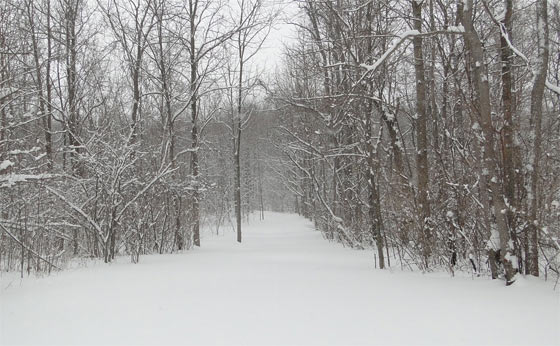COLD Weather Survival: Clothing

One of the most difficult survival situations is a cold weather scenario. Every time you venture into the cold, you are pitting yourself against the elements. With a little bit of knowledge of the environment, proper plans, and appropriate equipment, you can overcome the elements.
The most important aspect to staying warm in cold weather is your clothing – which you might also say is your immediate body shelter.
Here are four principles to follow regarding the clothing you wear:
Cold is a far greater threat to survival than you may think. A cold body core temperature is an insidious enemy; as it numbs the mind and body, it even subdues the will to survive.
Here are four basic principles to follow.
Clean – Keep clothing clean.
Overheating – Avoid it.
Layers – Wear clothes in loose layers.
Dry – Keep clothing dry.
Clean
While clean clothing is always important for sanitation and comfort, clothes that are matted with dirt and grime may lose much of their insulation value. Heat can escape more easily from the body through the clothing’s crushed or dirt-filled air pockets within the fabric.
Overheating
When you sweat, your clothing tends to absorb the moisture – and dampness decreases the insulation quality of clothing, and as sweat evaporates, your body cools. Adjust your clothing (layers) to avoid overheating and sweating. Do this by partially opening your parka or jacket, by removing an inner layer of clothing, by removing heavy outer mittens, or by throwing back your parka hood or changing to lighter headgear. The head and hands act as efficient heat dissipaters when overheated.
Layers
Wear your clothing loose and in layers. Wearing tight clothing (or footwear) restricts blood circulation and invites cold injury. It also decreases the volume of air trapped between the layers, reducing its insulating value. Several layers of lightweight clothing are better than one equally thick layer of clothing, because the layers have dead-air space between them. The dead-air space provides extra insulation. Also, layers of clothing allow you to take off or add clothing layers to prevent excessive sweating or to increase warmth.
Dry
In cold temperatures, the inner layers of clothing can become wet from sweat. The outer layer (if not water repellent) can become wet from snow and frost melted by body heat. The inner layer of clothing should be of fabric that wick away moisture from your skin (e.g polyester blends, polypropene). Outer layers should be water repellent. Despite the precautions you take, there will be times when you cannot keep from getting wet. At such times, and depending on your excursion, drying your clothing may become very important. Ideas include hanging your damp mittens and socks on your rucksack. Sometimes in freezing temperatures, the wind and sun will dry this clothing. You can also place damp socks or mittens, unfolded, near your body so that your body heat can dry them. In a campsite, hang damp clothing inside the shelter near the top, using drying lines or improvised racks. You may even be able to dry each item by holding it before an open fire. Dry leather items slowly. If no other means are available for drying your boots, put them between your sleeping bag shell and liner. Your body heat will help to dry the leather.
There is more to staying warm than just this (e.g. types of insulation), but I believe the principles above are basic common-sensible points to consider.
What are some of your ideas, or “do’s” or “don’ts”?
